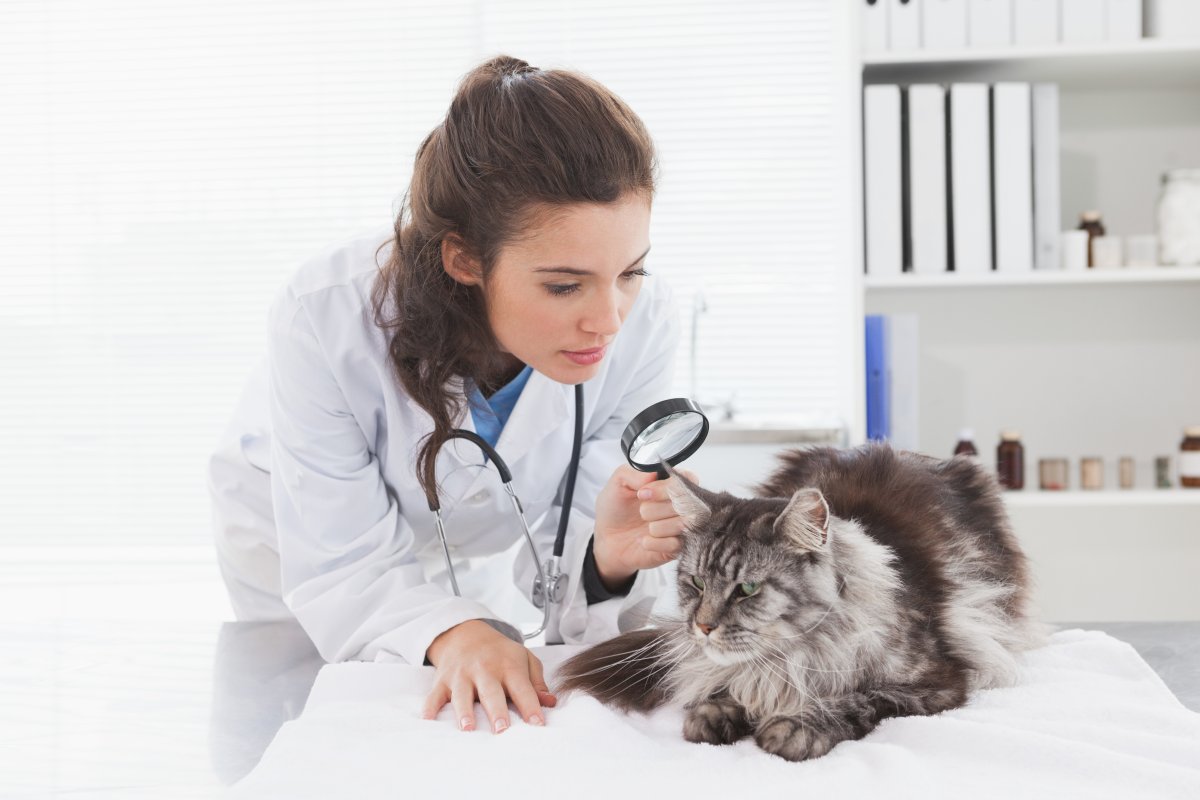Are you making a pros and cons list about whether or not to adopt a cat? You probably have pros at most, but I’m going to tell you something that you have to add to your cons list.
This informative piece specifically highlights a common infection that can be transmitted through cats and can be fatal for your family and, in some cases, your cat; toxoplasmosis.
What Is Toxoplasmosis?
Today, more than 40 million United States citizens are infected with toxoplasmosis and don’t even get me started on the statistics of animals affected, especially cats. This infection originates from a single-celled parasite called Gondii, in short. It can settle in a human’s body for a good period, possibly a lifetime.
However, it is not too hard to prevent toxoplasmosis because our body’s immune system can fight it easily. On the contrary, people with weak immunity, especially pregnant women, need to take precautions as they have more chances to fall victim to toxoplasmosis.

How Can You Get Toxoplasmosis?
There are multiple factors that can cause this infection to unbridle in our bodies.
- Although toxoplasmosis is not transferred through skin contact, handling uncooked or contaminated meat, pork or shellfish and not washing hands before contact with the mouth or simply eating them can cause serious health issues and this infection.
- Eating food sliced by knives or utensils that had contact with contaminated and raw meat.
- Transmitted from mother to child.
- Cat feces contain toxoplasma parasites. Therefore accidentally ingesting or touching cat feces while cleaning up and not washing hands later might encourage the infection to spread.
- Accidentally ingesting contaminated soil after gardening by not washing hands.
- Getting transplanted an infected organ or blood, although this is rare.
- Drinking contaminated water.
A cat does not necessarily cause toxoplasmosis but can get infected by eating affected rodents or birds. The parasite is primarily passed through feces that we clean which creates contact between two variants.
Symptoms In Humans?
Symptoms can be different for every individual, from mild to severe. In other news, many people often don’t know they have toxoplasmosis because they don’t experience any symptoms. Whereas the ones who do, get symptoms out of those mentioned below.
- Feeling of flu, muscle ache and body pains that last longer than a month.
- In severe cases, a previous toxoplasmosis infection can re-activate again and cause serious damage to the organs, including the brain and eyes. People with weaker immunity are more likely at stake, but it can also target a healthy immune system and cause eye damage.
- Children that are infected with toxoplasmosis in the womb often show no symptoms at birth but may develop signs once they start growing. However, a number of cases have shown eye or brain defects with babies born with toxoplasmosis.
Symptoms In Cats?
This infection is rarely caused in cats, but symptoms may include;
- Eye and visionary problems
- Tremors seizures as a part of neurological signs
- Breathing problems and pneumonia
- Jaundice and other liver diseases
- Fever, weight loss, lethargy and loss of appetite
- Vomiting, diarrhea and muscle pains.

Possible Treatments
If you are diagnosed with toxoplasmosis, preferably, you should start treatment right away and continue getting it until after your symptoms start fading. The diagnosis could be challenged if you don’t feel better within a few days.
One course of a toxoplasmosis treatment usually consists of an antibiotic called clindamycin. This medicine is mainly given alone, but corticosteroids are combined with the daily dose in eye inflammation or nervous breakdown cases.
Prognosis
Typically, cats diagnosed with toxoplasmosis have a poor prognosis due to the affected organs within them, the duration between infection and treatment, and their initial response to therapy. Usually, cats with CNS and eye symptoms respond more slowly to treatment, but their prognosis is most productive when their symptoms go away in a span of about 3 days. On the other hand, infections that spread to the liver or lungs end poorly in cats.
Prevention Steps
Prevention for Humans:
- Wear gloves while gardening or coming in contact with soil, and after you are done with your business, it is essential that you wash your hands.
- Avoid exposure to uncooked or contaminated meat as much as you can. Wash your hands thoroughly if you touch it, but overall, don’t taste meat while it’s raw.
- To reduce cross-contamination risks, wash your kitchen utensils frequently, especially after preparing and handling raw meat.
- Wash your fruits and vegetables thoroughly when you plan on eating them raw. Additionally, removing peels will always lessen the chances of contamination.
- Refrain from drinking crude milk as it may contain parasites of toxoplasma.
- Cover up your children’s sandboxes when they are not using them to keep cats away from thinking it’s a litter box.
Prevention for Cats:
- Feed your cats dry and canned food at most, avoid giving them raw meat.
- Keep cats indoors and take them for walks under your supervision so that they don’t eat or have contact with infectious prey.
- Don’t adopt stray cats, as most of them may not show signs of toxoplasmosis; however, get them tested immediately if you do. You will have to wait for about a month for the results.
- Have someone cautious to clean your cat’s litter box, but if that is not possible, wear a mask and gloves while cleaning and end your task with a thorough wash of hands.
- Dispose of litter boxes more frequently, so that excreted waste does not evolve to become infectious.
Who Is At Risk For The Severity Of Toxoplasmosis?
People who have a higher chance of contracting this infection are;
- People with a very weak immune system, especially those with HIV/AIDS, cancer or are going through chemotherapy.
- Individuals who have recently had an organ transplant.
- Children who are born from mothers who had gotten infected during or right before pregnancy.
Hope you like this informative piece, and we would love to read your stance on the topic!







